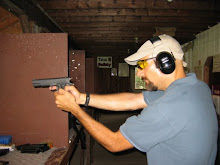SEATTLE, Washington (CNN) -- A wiry, slightly hunched man presses in a few numbers, the electronic lock gives way with a beep and the group presses into the crowded laboratory, plastered with ominous warnings about toxins and biohazards.
Guiding the visitors at the Fred Hutchinson Cancer Research Center is Mark Roth, a 50-year-old biologist with a tall forehead, thinning red hair and a perpetual wry smile. He asks his assistant, Jennifer Blackwood, if the rat is ready. It is. She turns a dial, and the sealed enclosure starts to fill with poison gas -- hydrogen sulfide. An ounce could kill dozens of people.
The theory is an intruiging one: It's not the lack of oxygen that's fatal, it's the rapid loss. Replace the oxygen with a different gas essentially stops the clock. Of particular interest is this:
The air we breathe is 21 percent oxygen. At 5 percent, those fish and flies -- like us -- would be dead in a few minutes. At 0.1 percent, it was another story. "You get a state of suspended animation and the creatures do not pass away, and that's the basis of what we see as an alternative way to think about critical care medicine," Roth says. "What you want to do is to have the patient's time slowed down, while everyone around them [like doctors] move at what we would call real time."
The implications of this are staggering - complex surgeries that require racing the clock against blood loss or other cell death will no longer take place; the patient will be placed in suspended animation and the surgeons can proceed at a slower, more cautious rate. If successful, this could be a breakthrough in medicine equivalent to penicillin - imagine EMS only have to show up, suspend the patient, and get them to the hospital without having to speed or LifeFlight.
And that's not even scratching the surface of space travel - Alpha Centauri here we come!
That is all.







5 comments:
I am not so sure about the implications there. Hydrogen sulfide preferentialy displaces oxygen at the receptor sites in hemoglobin. H2s is very hard to dislodge from heme, the protein that does the work in hemoglobin. My understanding is that a whole-body transfusion is the only way to save someone with high h2s in the blood. That's going to be a hell of a follow-up hurdle.
I don't think I'd like to have to worry about a leaky cylinder of that stuff on my ambulance.
On a similar note, some EMS agencies are now using induced hypothermia as a standard intervention in cardiac arrests. All it takes is chilled IV fluids and a few ice packs. There is a very significant increase in rates of survival to discharge.
It's an idea- the same way all great discoveries and dismal failures begin.
It will be interesting to see where this goes.
Very interesting research. I can see applications some applications for surgery as you note. It will likely be several years before medicine sees practical applications and several more before we see it in EMS. By that time, we'll be able to beam patients to the hospital and won't need ambulances.
We finally get to get off this planet??
Post a Comment